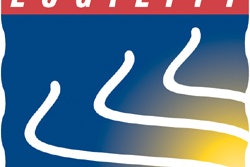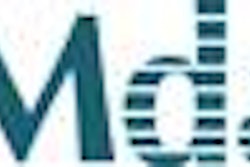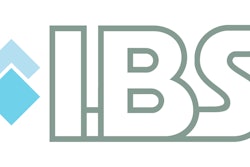Engineers, scientists, researchers, and other technical professionals are squarely in their CEOs' crosshairs today. Senior management has recognized that these professionals' value-added knowledge competencies have a direct impact on a company's current and sustained performance.
As a result, the technical enterprise is feeling immense top-down corporate pressure to directly contribute to growing the business, driving efficiency, controlling costs and mitigating risks. In response, companies are moving to adopt a new generation of technical content and research solutions that allow these professionals to overcome information overload and focus on delivering increasing value to the business.
CEO Optimism ... and Concerns
The vast majority of CEOs are optimistic about the economy as a whole and also bullish on their own businesses' prospects over the coming three years, according to an annual CEO survey from KPMG. Senior executives envision the potential for "efficient growth and the opportunity to leverage new technologies to enhance customer relationships and streamline operations," KPMG reports.
But the picture isn't all rosy: 72 percent of CEOs are concerned about the relevance of their companies' products and services over the next three years, 90 percent fret about competitors taking their business, and 59 percent worry about new entrants disrupting their business models.
Among these CEOs' top concerns are product relevance, geographic expansion and understanding the regulatory environment. Meanwhile, risk management is not generally discussed among most companies, leaving them feeling vulnerable to a preventable failure or quality defect that jeopardizes their business.
The good news is that business leaders know innovation, market knowledge and technical know-how are all critical to their survival. In fact, 72 percent of the 300 leaders surveyed in 2015 said that innovation is "very important" to their company's success right now.
Drowning in Information
So what's holding companies back from achieving high levels of innovation? The truth is, many organizations today are struggling with the pace and complexity of engineering and other knowledge work within the technical enterprise.
Consider that engineers, scientists, researchers and other technical professionals handle a huge volume of data sources, information and systems on a daily basis. They are literally drowning in information, despite—or perhaps because of—the millions their companies have invested in technical content and IT systems intended to manage and deliver information. With data growing at a rate of 40 percent annually, 66 percent of decision makers report they now have less time to make the best possible choices for their companies.
Overwhelmed by information, knowledge workers are unable to assess future technology and intellectual property needs, leverage existing IP, commercialize new ideas, or analyze regulatory, technological or market trends quickly enough to capitalize on opportunities or gain competitive advantage. As a result, their companies are:
- At risk and prone to product/process quality failures from an inability to leverage quality systems and other supplier/customer data sources.
- Held back by legacy designs and methods, and by traditional thinking that leaves no path forward on technical constraints, proprietary risks and subpar performance.
- Culpable for the use of outdated or erroneous public domain information instead of vetted and approved internal/external data, specifications and control documents.
- Underutilizing existing enterprise search tools and information systems that are easier to circumvent with Internet searches or by starting from scratch.
- Losing operating knowledge, practical know-how, and professional experience from top senior technical talent exiting the workforce.
As a result, companies pay the ultimate price by having their technical workforces diverted from their core competencies, effectively losing millions of dollars a year in the process. After all, there are real costs associated with failing to keep pace with market trends, losing ground to the competition, being displaced by new entrants, failing to meet launch dates, and lacking the inventiveness to introduce new products or processes that drive growth and create profitability.
Such opportunity costs can be hard to quantify, but they can add up to millions of dollars in lost opportunities on a daily basis for companies around the globe. For instance, if you could shave two to four weeks' worth of time off a project that you are working on, what would the ultimate time savings amount to in terms of business benefit? What if you could reduce that time by two to four months—what would that equate to?
***pull-graphic #1 here ***
The High Cost of Information and Indecision
In addition to being ubiquitous, information is also expensive. In fact, many organizations are likely paying 10 to 40 percent more than they should to acquire basic technical content (standards, reference books, patents, journals, etc.).
These excessive costs can be attributed to decentralized, uncoordinated or "maverick" purchases of hundreds, thousands, or potentially millions of documents from disparate sources: SDO storefronts, individual publishers, document distributors and even dubious e-commerce sites selling outdated or "bootleg" materials in violation of copyright laws.
The risks associated with information can be expensive, too. Using unapproved or erroneous data in the design cycle are obvious examples where using the wrong information can have catastrophic consequences. But the technical organization is often a virtual blind spot for senior management when it comes to understanding potential hidden risks.
For example, when knowledge workers have to invest more time seeking information than actually using the information, the risk increases that a potential product failure will slip through a review. Knowledge workers have been hired, trained, and employed for their know-how and experience. But they are burying their heads in data, documents and systems in search of needed answers, spending 30 to 50 percent of their time gathering, managing and sharing information, according to industry surveys. As a result, they are diverted from the very value-added tasks that drive corporate performance, and the risks become all too real.
*** Pull-out graphic #2 Here ***
Barriers to Change
Making the connection between information overload and subpar corporate performance is pretty straightforward, but figuring out what to do about it is more complex. After all, over the past decades, companies have invested in multiple systems to improve their technical workflows, whether CAD, PLM, content management systems and so on. Yet even with all these tools and platforms, organizations still struggle to get optimal performance out of their technical enterprise. Why?
Several reasons, actually. To begin with, solution providers have traditionally come at this challenge from either a "content" perspective or a "tool" perspective, rather than linking the two by layering analytical capabilities atop a foundation of essential content. In addition, without search technology that can integrate various external and internal content sources, technical professionals are left to log into multiple systems, aggregate information on their own, and then figure out how to integrate the data into disparate analytical tools.
Furthermore, the many enterprise search tools or other technologies that have been available to companies to date have traditionally required customization and development. They have also lacked the rich functionality needed by knowledge workers to fulfill their specific tasks and activities in the context of their technical workflows.
For instance, to conduct root cause analysis (RCA), typically an engineer has had to deploy generic technology first, and then customize it for specific tasks associated with RCA. The content itself poses another challenge due to a dependency on aligning internal data and systems with external technical content to complete tasks. Put simply, generic technology alone cannot solve the problem.
Ultimately, without the appropriate content, analytics and tools brought together in a holistic and well-orchestrated manner, corporations are typically left overspending and underachieving. They fail to truly turn the tide in their favor, unable to achieve their full potential as knowledge-driven technical enterprises.
Escape the Information Abyss
How, then, to approach this challenge? You can start by stepping aside and asking yourself this question: If my organization was drowning in information, and if this situation was draining our performance as a company, then what solution would I put in place to rise above the information, restore order and get my knowledge workers back to innovating and creative problem-solving?
Based on more than 55 years of experience providing essential content to the technical community, IHS has seen successful companies start by giving their technical professionals a single go-to source for the content and documents they need to do their work. That includes internal content drawn from structured and unstructured systems, like PLM, CAD and ERP, shared drives, SharePoint, and so on. It also includes external content like industry standards and specifications, eBooks from the leading technical publishers, journal articles, patents and other sources of technical information.
The next step is to apply next-generation search technology and content analytics to allow knowledge workers to quickly drill down to relevant answers within all this content without getting bogged down. Finally, companies are leveraging specialized problem-solving tools and techniques tailored to the specific needs of the technical enterprise, allowing their knowledge professionals to analyze and draw intelligence from all the content at their disposal.
*** Pull-out graphic #3 HERE ****
Throw Your Engineers a Life Ring
The benefits of supporting the technical enterprise with this sort of three- legged platform—built on content, next-generation search technology, and tools designed by and for technical professionals—can be substantial. Put bluntly, knowledge-based organizations outperform their peers.
Industry research shows that engineers and other technical workers at these organizations spend 30 percent less time looking for information, they're 15 times faster when it comes to leveraging information, and they're 30 percent more likely to find what they're looking for when they need it. Based on industry estimates, these performance improvements within the technical enterprise translate into two times greater shareholder returns, four times greater return on revenues, and 3.5 times greater return on assets for an organization as a whole.
Imagine the impact that these improvements would have on your own organization. What would that actually translate into in terms of your ability to meet your business goals and objectives? Would you be able to lower your costs? Increase systems ROI? Increase productivity? Cut two to four months' time to market off a key project or deliverable? Deliver a 70 percent or greater improvement to your ideation practices? Reduce defects and failures by 200 percent? The possibilities are endless, and the platform that can enable these and other results is within reach.
As you begin to think differently about your organization and its dependency on information, you can envision the content, analytics and technology that will eradicate information overload, throw your engineers a life ring, and restore your organization's focus on innovative, creative and inventive practices.
With CEOs' top concerns resting on the shoulders of the technical enterprise right now, being able to fluidly provide the information and insight that knowledge workers need to fulfill their missions is critical. A knowledge-based organization does exactly that, and in doing so, helps its CEO drive company success in the marketplace.
Sidebar
It Pays to Connect Knowledge Workers with Critical Tools and Insights
With more than 70 percent of CEOs viewing innovation as "very important" to organizational success right now, knowledge workers need a technology platform that allows them to foresee new technology and intellectual properties, make informed strategies, find new markets for existing products, and accelerate innovation. According to industry research, technical workforces that are equipped with these insights can:
- More rapidly transform consumer, competitor or market intelligence into new and differentiated product designs or development ideas.
- Reduce product development cycle times.
- Break through technical constraints (i.e., a regulation or blocking patent that looks insurmountable).
- Collaborate more effectively to reduce time to market and improve innovation and validation processes.
- Enhance quality management and prevent failures, thereby improving customer satisfaction, avoiding rework and repair, and minimizing major threats or risk to the enterprise.
- Extract knowledge from vetted and approved control documents, systems and data to minimize risk exposure and increase productivity.
- Increase the use of existing IT systems and investments to raise productivity, thus eliminating inefficient, costly and risky or maverick practices.
- Formally implement knowledge transfer to assure the preservation, accessibility, or optimization of their senior technical resources and/or specialized technical talent that moves within (or exits) the enterprise.
Sidebar:
Unleash the Technical Enterprise
It's time for organizations to combine content, search and analytics to "make a leap" and become the knowledge-driven, innovative enterprises they aspire to be. That's where IHS Engineering Workbench comes in. It's the only rapidly-deployed, next-generation platform for the technical enterprise that provides global organizations with a complete and comprehensive set of content, next-generation search capabilities, and advance tools to drive profitable growth and competitive advantage from the technical workforce. Using the platform, companies can effectively arm knowledge workers with the technical expertise they require without bogging them down with superfluous data.
Innovative and ground-breaking in its own right, Engineering Workbench connects engineering, scientific, and technical professionals –and internal communities across the technical enterprise –with more than 110 million must-have engineering and technical reference books, patents, technical articles, reports, design principles and other essential content. It also connects these workers to their own internal knowledge sources and helps them foster knowledge retention, transfer, and discovery, while using next-gen search technology to extract answers and derive insights from internal and external content sources. Furthermore, Engineering Workbench provides advanced research, problem solving, and analytical tools (such as root cause analysis, technology and patent trend analysis, consumer insights or intelligence), to extract product ideas from social media.
Engineering Workbench reduces the total cost of ownership (TCO) of information and technology purchases, while increasing the return on investment (ROI) of existing information and technology deployed across the enterprise. Tailored to the unique needs of enterprise knowledge workers, Engineering Workbench empowers business leaders to equip their technical workforce with a holistic lightweight framework consisting of vetted technical content, advanced research capabilities, and a consistent user experience that's designed specifically for the technical audience. This, in turn, enables the processes and activities associated with knowledge work, and helps improve innovation, drive operational efficiency, control costs, and mitigate risk.
With Engineering Workbench, scientists, researchers, engineers, technicians, and other knowledge workers finally have a single information, analytics, problem solving, and decision-support platform. This enables information-laden organizations to transform into knowledge-driven corporations that benefit from improved product quality, faster time to market, reduced costs, global opportunities, better regulatory compliance, and improved customer satisfaction.
Empower your engineering community with IHS Engineering Workbench. Learn more at www.ihs.com/ewb.
Pull-out graphic #1
42%
How much of their time engineers and other knowledge workers spend seeking, processing, collaborating, and sharing information —time they could be using to solve problems.
Source: IDC Research & IHS Independent Analysis
Pull-out Graphic #2
120%
How much the average new product development project exceeds its schedule.
Source: The Center for New Product Development: The Cost of Project Inefficiency. US National Institute for Science & Technology
pull-out graphic #3
30%
Reduction in research time when using a technical knowledge management platform that combines content, next-generation search technology, and research tools.
Source: IHS research based on customer successes


![Pros To Know 2026 [color]](https://img.sdcexec.com/mindful/acbm/workspaces/default/uploads/2025/08/prostoknow-2026-color.mduFvhpgMk.png?auto=format%2Ccompress&bg=fff&fill-color=fff&fit=fill&h=100&q=70&w=100)




